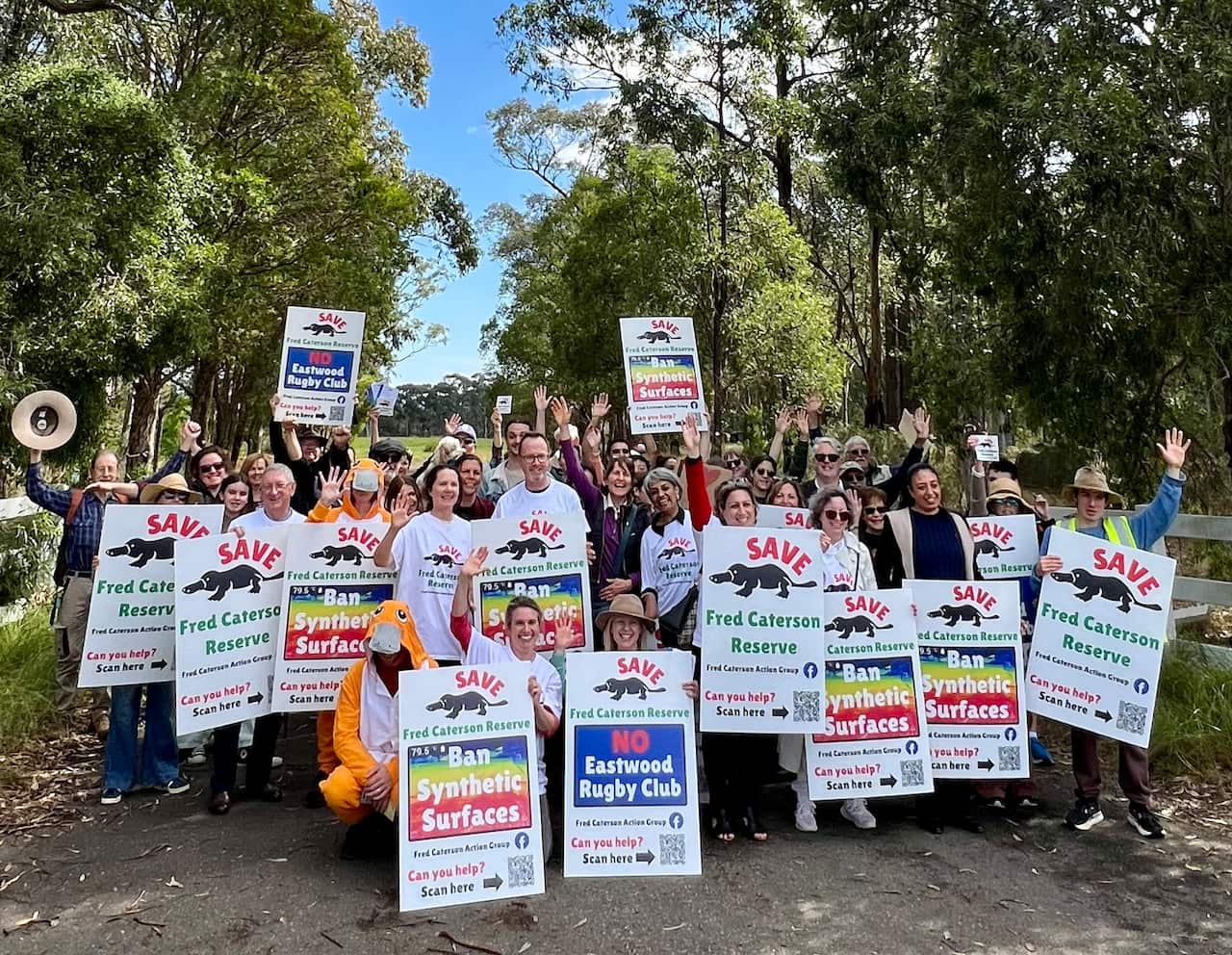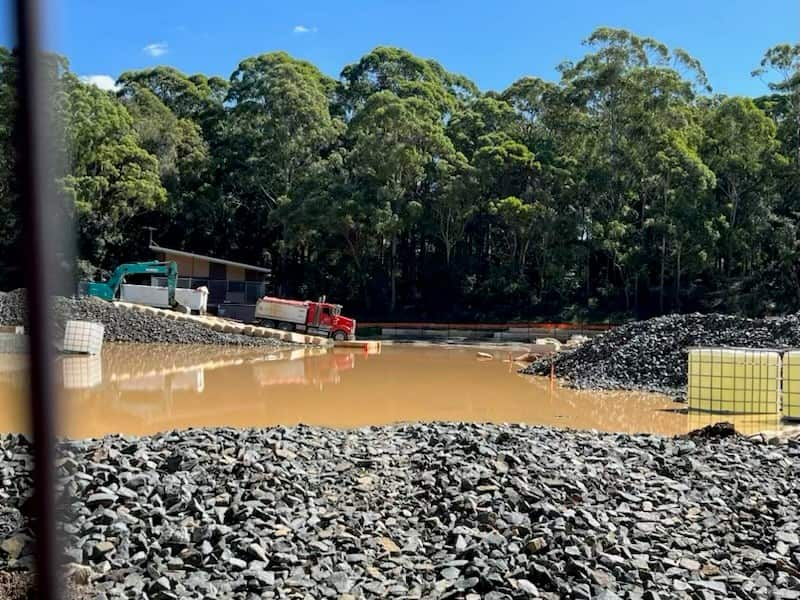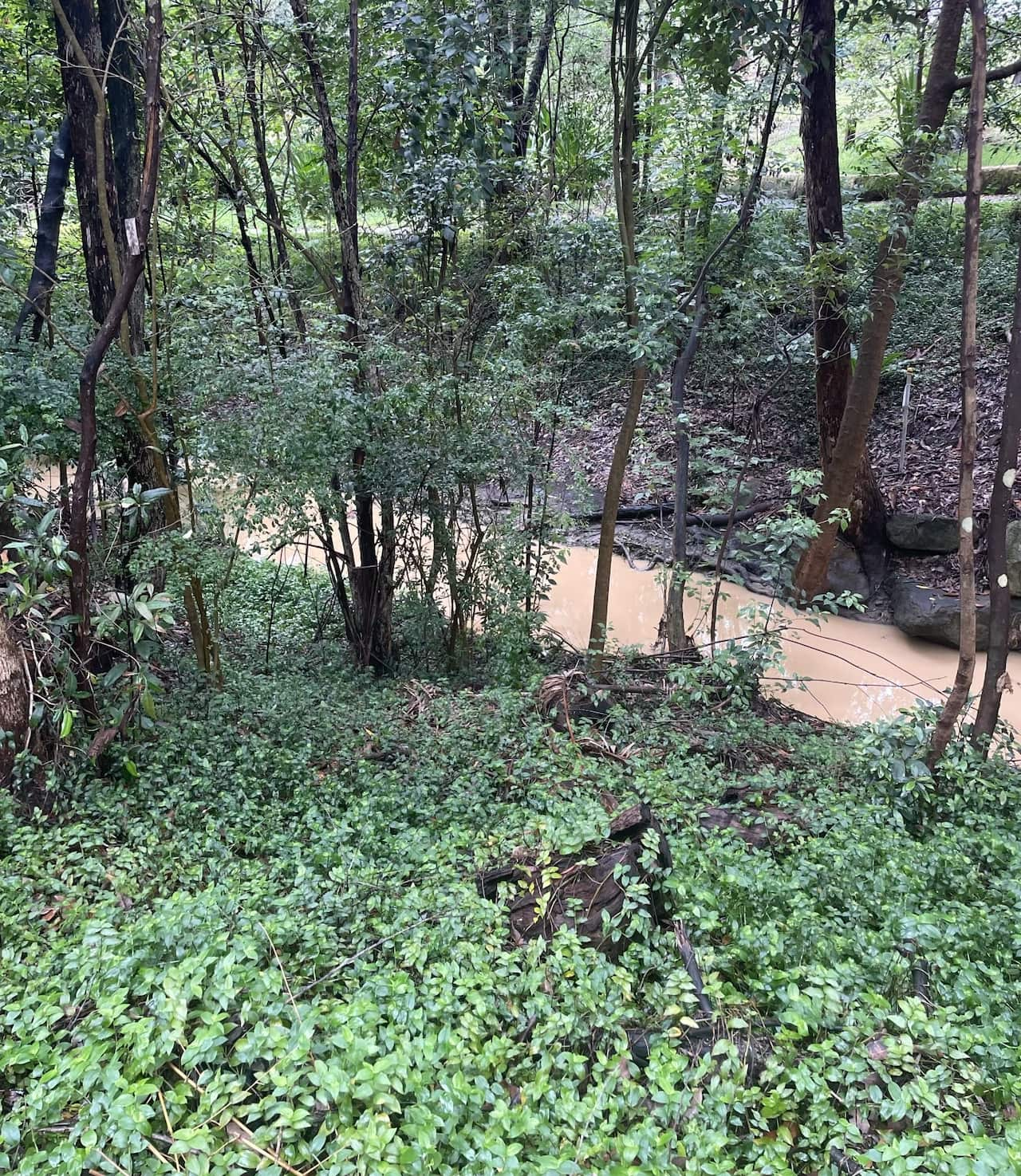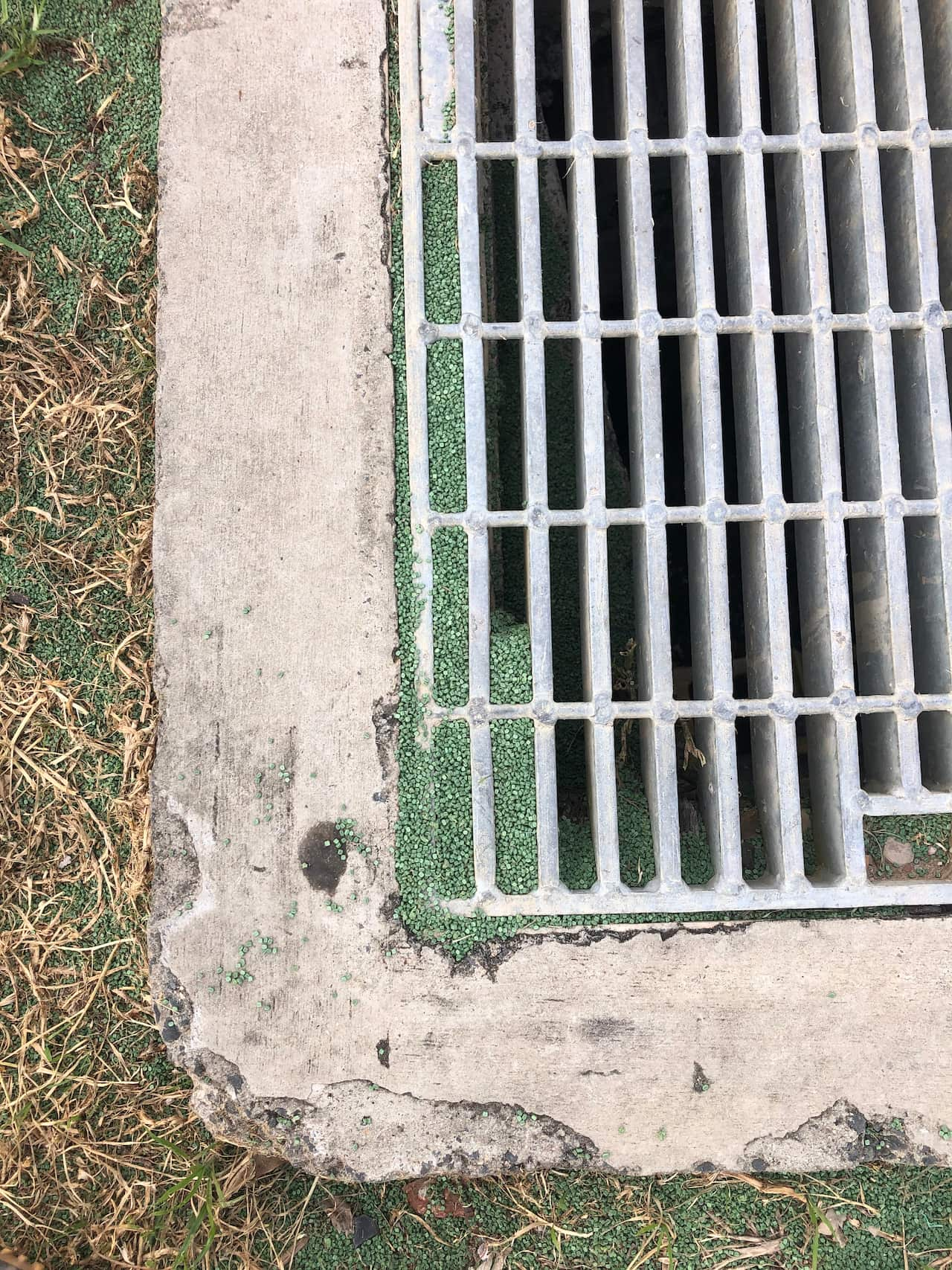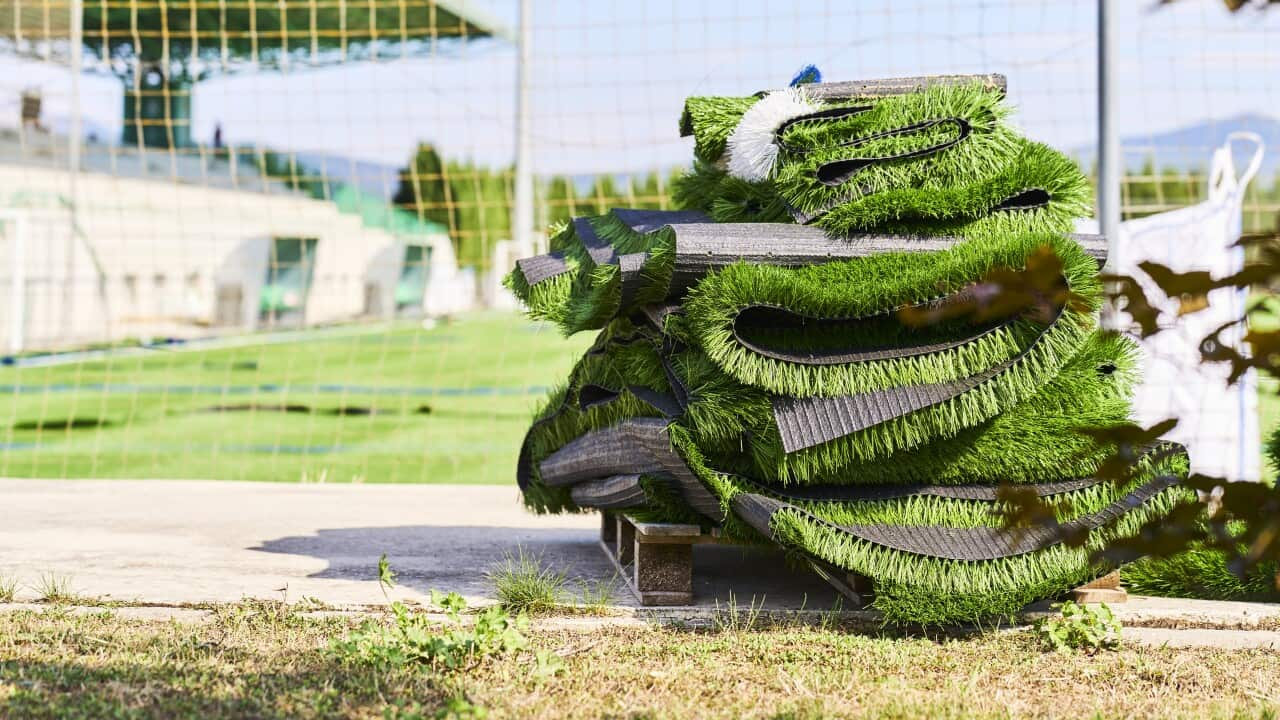A global debate has become a hot-button issue for voters in some local areas as they, and millions of others across NSW, cast their ballots in the state’s local government elections.
More than 1.1 million people had already voted before Saturday and millions more are heading to polling booths to decide on the make-up of local councils for the next four years.
Fixing roads, keeping rates low, and controlling over-development are among the issues many candidates have chosen to campaign on.
But in some areas, synthetic turf has also become a key factor in voters’ decision-making.
Groups of residents in some Sydney local government areas, including the Inner West Council, are vocally opposed to synthetic grass. Source: Supplied / Hall Greenland
There’s been a six-fold increase in sports fields using the artificial alternative to grass in the past five years, with it now covering more than 181 fields in the state.
The mayor of Sydney’s Northern Beaches council, Sue Heins, told the Guardian in October last year that synthetic fields are far more durable than those covered by natural grass.
“These new surfaces are more resilient and unlike natural turf, they do not require returfing or weed control and can still be used in wet weather — meaning more play time,” Hein said.
However, others are critical.
Residents upset over proposed synthetic fields
The Fred Caterson Reserve in the Hills Shire Council in Sydney’s north-west is home to glossy black cockatoos, powerful owls and platypuses. It also allows bushwalkers to explore some of Sydney’s last-remaining Turpentine-Ironbark Forest.
There are several sporting facilities in the reserve, including football and cricket fields, a basketball stadium and a baseball field.
But a council proposal to build a “premier rugby union facility” featuring synthetic turf, on the site of a former pony club at the reserve, has drawn the ire of some locals.
The facility is expected to feature a grandstand, clubhouse, and broadcast lighting, as outlined in the 2020 master plan.
Greens councillor Dr Mila Kasby said: “The community feels this is all progressing behind closed doors, in the darkness, without knowing what to expect.”
Kasby fears the environmental impact will be significant, with severe biodiversity loss.
Sports coach and longtime resident Brendan Meller said he would take his frustration to the ballot box on Saturday.
“If a council is not listening to the community, then I don’t want them representing us,” Meller said.
A Hills Shire Council media spokesperson said it has no plans for synthetic fields.
But it signed a memorandum of understanding (MOU) with Eastwood District Rugby Union Football Club to “potentially further embellish these fields to a higher standard in the future”.
This may include the development of “two synthetic fields” according to the football club’s publicly available plans.
Greens councillor Mila Kasby tabled a petition against the Fred Caterson development that collected 16,000 signatures from both within and outside the electorate. Source: Supplied / Mila Kasby
The MOU with Eastwood Rugby and environmental impact reports were not released by the council until the NSW Civil and Administrative Tribunal ordered their release in proceedings initiated by a local wildlife carer last December.
The documents indicate an estimated 350 trees — 271 of which are protected, will be cleared for the development.
Norman Griffiths ‘nightmare’
While some residents attempt to intercept developments before they happen, others are dealing with the fallout.
Former bushcare coordinator for Ku-ring-gai Council, Bronwen Hanna — who resigned in protest over plans to replace grass with synthetic turf — is among them.
“It’s a land grab of public assets,” she said.
The Norman Griffiths development was initially rejected by the council after flood experts deemed the site unsuitable. Source: Supplied / Jill Green
Hanna is a member of Friends of Lane Cove National Park, a group that conducts bush regeneration work and brought an unsuccessful legal challenge against the conversion of Norman Griffiths Oval into a synthetic field.
After record rainfall in April flooded the site and asbestos was found, the development is expected to cost much more than originally expected.
The council estimates it will now cost upwards of $5 million instead of $3.2 million.
“It’s costing five times more than the sports ground surface at the CommBank Stadium, but the ratepayers are paying for the variations,” Hanna said.
The public record shows third parties offered council grants of almost $1 million for construction, but it was conditional on the field being synthetic.
After the Norman Griffiths Oval project caused sediment to run into a creek in Lane Cove National Park, the NSW Environment Protection Authority ordered Ku-ring-gai Council to clean up the pollution. Credit: Bronwen Hanna
Synthetic industry not ‘the demons’
The issue of synthetic turf is being debated globally.
The European Union has banned rubber crumb infill due to concerns about microplastics ending up in waterways, giving the industry eight years to switch to alternatives such as cork and wood products.
A report prepared last year by NSW chief scientist and engineer Professor Hugh Durrant-Whyte measured the environmental cost of synthetic turf.
Despite acknowledging several “knowledge gaps”, Durrant-Whyte found that synthetic fields can modify micro-climates by contributing to urban heat, adversely impact soil health, and increase flood and fire risks in vulnerable areas.
While he stopped short of recommending a moratorium on rubber crumb, the synthetic turf industry is preparing for potential changes.
Rubber crumb accumulated in gutters at Bernie Mullaine field in Kellyville following rain. Source: Supplied / Mick Battam
Jarrod Hill, managing director and CEO of SportEng, an engineering company that designs sports facilities, said the switch from rubber infill fields is only a matter of time.
“I would imagine in next 12 to 18 months there won’t be any more rubber infill fields being delivered,” he said.
“To allay those fears, we’re taking rubber out of the conversation and replacing it with organic infill like cork.”
While acknowledging the environmental cost and other disadvantages, such as heat retention, Hill said there is a place for synthetic turf in Australia.
“Are synthetic the demons? I think it’s just misunderstood is probably the best way to describe it.
“I’d hate to see a place where all sports grounds are synthetic, and my preference is always natural turf.
“But as long as we keep densifying our communities, then there’s a need for synthetic.”

